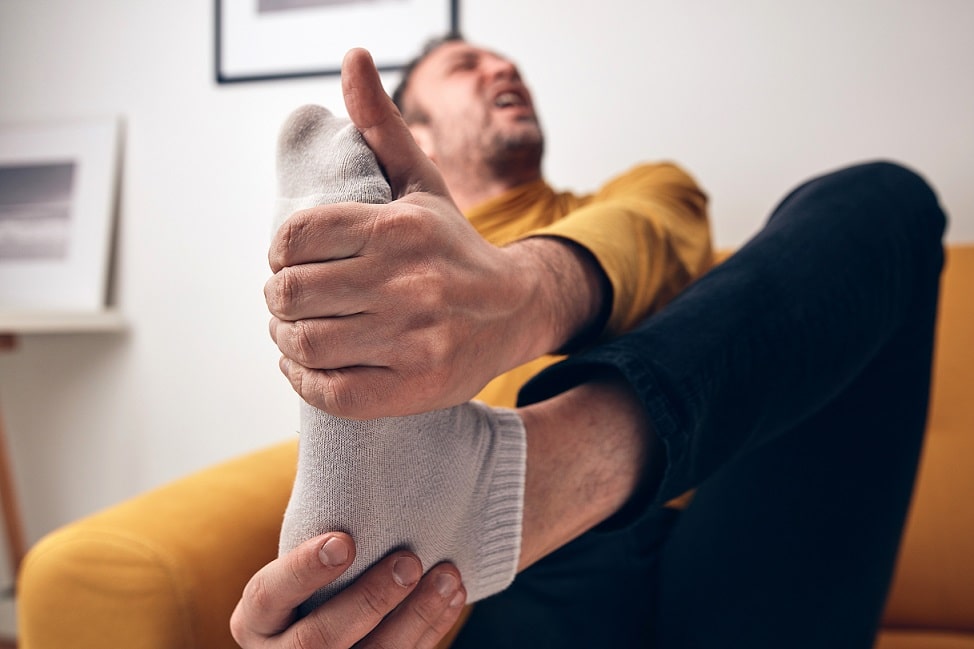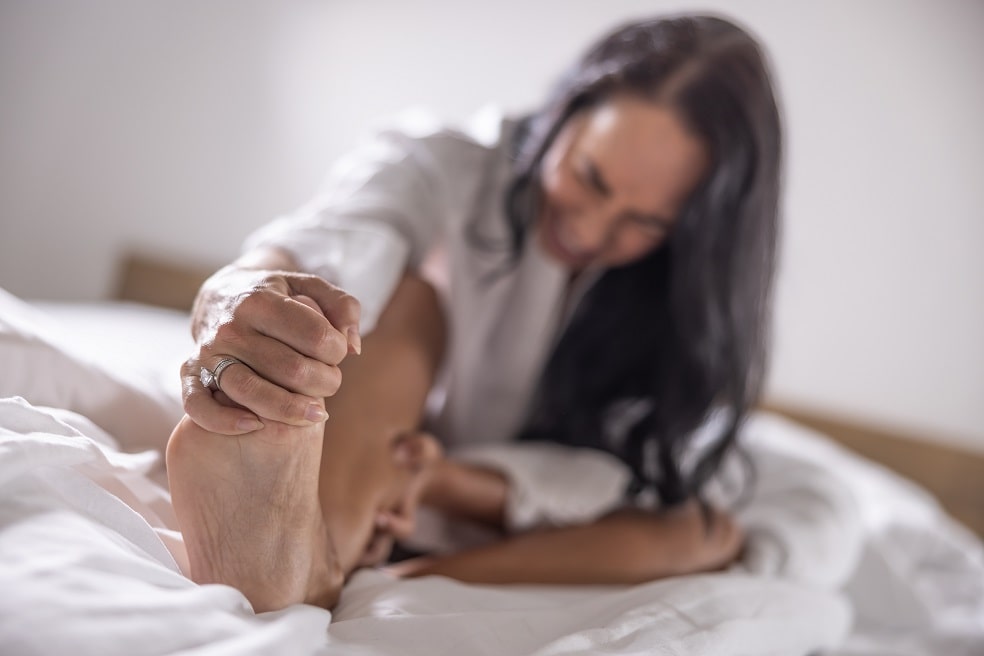Phone: +44 (0)20 8492 1600
Need help or have a question?
Contact us at: [email protected]
Suffering from foot cramps can be a debilitating experience, turning a routine stroll into a painful ordeal. However, understanding the causes of foot cramps and implementing some expert tips can help you prevent them from occurring in the first place.

One of the fundamental ways to keep foot cramps at bay is by staying hydrated. Adequate water intake ensures that your muscles are well-nourished and less likely to seize up. To understand more about the importance of hydration and find tips for maintaining it, consider reading about hydration and foot health.
While going barefoot may seem like the ultimate freedom for your feet, wearing supportive shoes is crucial, especially when indoors. Modern shoes can weaken foot muscles over time, making them prone to cramping. Choosing a comfortable pair of shoes to wear around the house can help you avoid this pitfall.
Poor circulation can lead to increased foot cramps. Keeping your feet warm, with cozy socks, can encourage blood flow, reducing the risk of cramps. For those moments when a cramp strikes, a warm compress can offer immediate, though temporary, relief. It’s also important to be aware of the signs of poor circulation and seek medical advice if necessary. More details can be found on managing foot temperature.
Magnesium is essential for nerve signaling and muscle contraction. While some studies show that magnesium supplements can reduce leg and foot cramps, the research is mixed. Before you start any supplementation, it’s advisable to talk with a healthcare provider, especially because over-supplementation carries its own risks. You can learn about the role of nutrients in foot health here.
When cramps strike, stretching and massaging the affected area can provide quick relief. For instance, if you’re experiencing a cramp in the calf, a stretch that targets the back of the leg can be beneficial. If you’re unsure how to perform these stretches safely, you might want to explore our guide to first aid for foot problems.

Weak foot muscles can be a primary cause of foot cramps. To counteract this, it’s crucial to engage in regular exercises aimed at strengthening your feet. A simple yet effective routine involves toe curls and marble pickups, which can fortify the intrinsic muscles of your feet. For a comprehensive guide to exercises that can strengthen your foot muscles and prevent cramps, check out foot strengthening exercises.
Implement these exercises into your daily routine to keep your feet strong and resilient.
Overtraining can also be a culprit in causing foot cramps. If you’re ramping up your physical activity, be it through running, walking, or other exercises, it’s crucial to do so gradually to allow your muscles to adapt. Always listen to your body and give it adequate rest between intense activities. For further insights into managing your activity levels, especially related to running and its impact on your feet, our page on running and foot health provides valuable information.
Maintaining a balance of electrolytes is essential, as imbalances can lead to cramping. Ensure your diet includes foods rich in potassium, calcium, and magnesium, which are vital for muscle function. A balanced diet can prevent cramps and promote overall foot health. Dive into the relationship between diet and foot health by visiting our nutrition and foot health section.

By combining adequate hydration, proper footwear, warmth, stretching, and a balanced diet, you’re setting a strong foundation for foot health. Here’s a holistic approach to preventing foot cramps:
Ensure you’re meeting your daily water intake goals. Keep a bottle handy at all times, especially if you’re active, to prevent the onset of cramps. Hydration is particularly crucial during
hotter months or when you’re sweating more.
Consider orthotics or insoles for additional support, especially if you have foot conditions such as flat feet or pronation. Discover the options available and the science behind them at our footwear and support section.
Invest in quality socks that keep your feet warm without causing them to sweat excessively. In the event of a cramp, using a warm compress can provide rapid relief. For those with colder feet, check out solutions and tips on our chilblains and cold feet page.
A balanced diet rich in electrolytes is key. If you’re prone to cramps, consider increasing foods rich in potassium, calcium, and magnesium. If your diet falls short, supplements might be beneficial, but only after seeking medical advice.
Regular stretching before and after activities can keep muscles flexible and less prone to cramps. Combine this with strength exercises for your feet to build endurance and prevent fatigue, which often leads to cramps.
Increase the intensity of your activities slowly. Overtraining is a common cause of muscle fatigue and cramps. Ensure your workout regimen includes rest days to allow your muscles to recover.
For more tips, insights, and products that can aid in preventing and treating foot cramps, visit our main foot care tips page for a wealth of information.